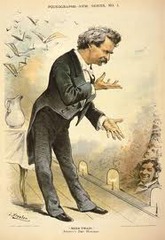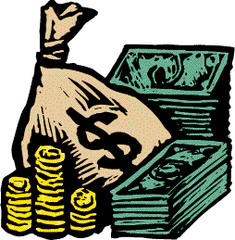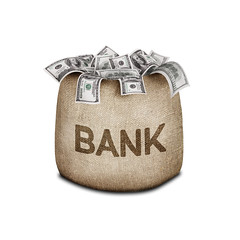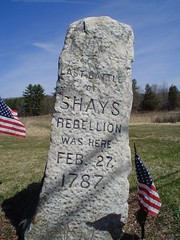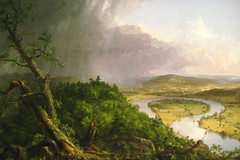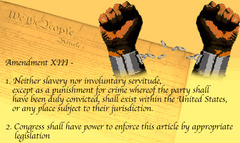| 9361373401 | Milton Friedman | Free market economist who gave evidence in the 1970s of a steady shift to the right, away from the liberalism of the 1960s. (p. 654) |  | 0 |
| 9361373402 | political action committees (PACs) | Political action committees which became a force for change. Opposed big government, New Deal liberalism, gun control, feminism, gay rights, welfare, affirmative action, sexual permissiveness, abortion, and drug use. (p. 654) |  | 1 |
| 9361373403 | Proposition 13 | In 1978, California voters passed this measure that sharply cut property taxes. (p. 654) |  | 2 |
| 9361373404 | Arthur Laffer | Conservative economist who believed that tax cuts would increase government revenues. (p. 655) |  | 3 |
| 9361373405 | religious fundamentalism | People who attacked secular humanism as a godless creed taking over public education. They campaigned for the return of prayers and the teaching of the Biblical account of creation in public schools. (p. 655) |  | 4 |
| 9361373406 | televangelists | Pat Robertson, Oral Roberts, and Jim Baker brought in 100 million viewers in which religion became an instrument of electoral politics. (p. 655) |  | 5 |
| 9361373407 | Moral Majority | Religion became an instrument for electoral politics when an evangelist from Virginia, Jerry Falwell founded this organization, which helped financed campaigns to unseat liberal members of Congress. (p. 655) |  | 6 |
| 9361373408 | abortion rights; Roe v. Wade | The legalization of abortion in the 1973 Roe v. Wade Supreme Court case, sparked the right-to-life movement. The movement united Catholics and fundamentalist Protestants, who believed that life begins at conception. (p. 655) |  | 7 |
| 9361373409 | reverse discrimination | After years of stagflation in the 1970s, many whites blamed their troubles on affirmative action, calling it reverse discrimination. (p. 655) |  | 8 |
| 9361373410 | Regents of University of California v. Bakke | The admissions policies of one medical school were challenged. The Supreme Court ruled that while race could be considered, the school had created racial quotas, which were unconstitutional. Conservatives used this decision to intensified their campaign to end all preferences based on race and ethnicity. (p. 655) |  | 9 |
| 9361373411 | election of 1980 | Ronald Reagan won this presidential election, defeating Jimmy Carter because of the Iranian hostage crisis and America's stagflation. It was significant because the Senate had Republican majority and more seats in the house allowing them to pass many key Republican programs. The 1980 election ended a half-century of Democratic dominance of Congress. (p. 655) |  | 10 |
| 9361373412 | Ronald Reagan | He was president from 1981 to 1988, he led a conservative movement against détente with the Soviet Union and the growth of the federal government. Some people credit him with America's victory in the Cold War while others fault his insensitive social agenda and irresponsible fiscal policies. (p. 656) |  | 11 |
| 9361373413 | supply-side economics (Reaganomics) | This economic theory argued that tax cuts and reduced government spending would increase investment by the private sector, which would lead to increased production, jobs, and prosperity. (p. 656) |  | 12 |
| 9361373414 | "trickle down" economics | Reaganomics was compared to the "trickle-down" economics of the 1920s, in which wealthy Americans prospered, and some of their increased spending benefited the middle class and the poor. (p. 656) |  | 13 |
| 9361373415 | Economic Recovery Tax Act | A measure signed by Reagan in 1981 which cut personal income taxes by 25 percent over three years, cut the corporate income tax, capital gains tax, and the gift and inheritance taxes. It offered the wealthy a broad array of other tax concessions. (p. 656) |  | 14 |
| 9361373416 | business deregulation | Reagan followed up on the promise of "getting governmnet off the backs of people" by reducing federal regulations on business and industry. Restrictions were eased on savings and loans, mergers and takeovers by large corporations, and environmental protection. (p. 657) |  | 15 |
| 9361373417 | PACTO strike | Reagan took a tough stand against unions, he fired thousands of striking federal air traffic controllers for violating their contract and decertified their union. (p. 657) |  | 16 |
| 9361373418 | Sandra Day O'Connor | President Reagan appointed this conservative judge to the Supreme Court, she was the first woman to serve on the Court. (p. 658) |  | 17 |
| 9361373419 | William Rehnquist | During the Reagan administration, he was the new Supreme Court chief justice. Under his leadership the court scaled back on affirmative action in hiring and promotions and limited Roe v. Wade influence by allowing states to impose some restrictions on abortions. (p. 658) |  | 18 |
| 9361373420 | growth of upper incomes | In the 1980s, well educated workers and yuppies (young urban professionals) enjoyed higher incomes from the deregulated marketplace while the standard of living for the middle class remained stagnant or declined. (p. 658) |  | 19 |
| 9361373421 | budget and trade deficits | President Reagan's tax cuts combined with large increases in military spending lead to federal deficits of more than $200 million a year. During his two terms the national debt tripled from $900 million to $2.7 trillion. The U.S. trade deficit reached $150 billion a year. (p. 658) |  | 20 |
| 9361373422 | election of 1984 | In this presidential election, Ronald Reagan ran against Walter Mondale, who chose Geraldine Ferraro as the first woman for vice presidential candidate. Reagan won by a landslide winning every state except for Mondale's home state of Minnesota. (p. 658) |  | 21 |
| 9361373423 | expand military | President Reagan expanded the military to fight against the Soviet Union which he referred to as the "evil empire". The defense budget grew from $171 billion in 1981 to $300 billion in 1985. (p. 659) |  | 22 |
| 9361373424 | Strategic Defense Initiative (Star Wars) | An ambitious plan for building a high-tech system of laser and particle beams to destroy enemy missiles before they could reach the United States. Critics called it "Star Wars" and argued that the costly program would only escalate the arms races. (p. 659) |  | 23 |
| 9361373425 | Nicaragua; Sandinistas | In Central America, Reagan supported right-wing dictators as long as they were friendly to the United States and anti-Communists. In Nicaragua, a Marxist movement known as the Sandinistas had overthrown the dictator. The U.S. responded by providing military aid to the "contras" in their efforts to remove the Sandinistas. (p. 660) |  | 24 |
| 9361373426 | Boland Amendment | In 1985, the Democrats passed this amendment which prohibited further aid to the contras in Nicaragua. (p. 660) |  | 25 |
| 9361373427 | Iran-contra affair | Iran and Iraq were at war, the United States sold antitank and antiaircraft missiles to Iran's government for their help in freeing Americans held hostage by radical Arab group. The U.S. then used the profits from the sale to fund the contras in Nicaragua. This violated the Boland Amendment and congressional budget authority. (p. 660) |  | 26 |
| 9361373428 | Beirut bombings | In April 1983, an Arab suicide bomber killed 63 people at the U.S. embassy in Beirut. A few months later, an Arab terrorist drove a bomb-filled truck into a U.S. Marines barracks, killing 241 servicemen. (p. 660) |  | 27 |
| 9361373429 | Palestine Liberation Organization (PLO) | The terrorist group that Israel fought with U.S. support. (p. 660) |  | 28 |
| 9361373430 | Yasser Arafat | The PLO leader who agreed in 1988 to recognize Israel's right to exist. (p. 661) |  | 29 |
| 9361373431 | evil empire | Reagan's term for the Soviet Communists and also "focus of evil in the modern world". (p. 659) |  | 30 |
| 9361373432 | Mikhail Gorbachev; glasnost, perestroika | New Soviet leader who impletmented changes in their domestic politics with these reforms: 1) glasnost: an openness to end political repression and move toward greater political freedom for Soviet citizens. 2) perestroika: reconstruction of the Soviet economy by introducing some free-market practices. (p. 661) |  | 31 |
| 9361373433 | tear down this wall | Reagan said this in a speech in front of the Berlin Wall to challenge Mikhail Gorbachev into falling through with his reforms. (p. 661) |  | 32 |
| 9361373434 | INF agreement | With this agreement, Reagan and Gorbachev agreed to remove and destroy all intermediate-range missiles. (p. 661) |  | 33 |
| 9361373435 | Tiananmen Square | In 1989, Chinese pro democracy students demonstrated for freedom in Beijing's Tiananmen Square. The Chinese government crushed the protest with tanks, killing hundreds. (p 662) |  | 34 |
| 9361373436 | Soviet satellites | Gorbachev declared that he would no longer support the various Communist governments of Eastern Europe with Soviet armed forces. (p 662) |  | 35 |
| 9361373437 | Poland, Lech Walesa | Starting in Poland 1989 the election of Lech Walesa, the leader of the once-outlawed Solidarity movement, the communist party fell from power in many countries in eastern Europe. (p. 663) |  | 36 |
| 9361373438 | Berlin Wall falls | In 1989, the Communists in East Germany were forced out of power after protesters tore down the Berlin Wall. In October 1990, the two Germanys reunited into one country. (p. 663) |  | 37 |
| 9361373439 | Soviet Union breakup | Many republics declared independence; the Soviet government was clearly powerless to stop the fragmentation. The Communist Party and Soviet government became powerless and ceased to exist. (p. 663) |  | 38 |
| 9361373440 | Russia Republic, CIS | Boris Yeltsin, joined with nine former Soviet republics to form a loose confederation, The Common Wealth of Independent States. (p. 663) |  | 39 |
| 9361373441 | Boris Yeltsin | President of the Russian Republic, he formed the Commonwealth of Independent States (CIS). He disbanded the Communist party in Russia and attempted to establish a democracy and a free-market economy. (p. 663) |  | 40 |
| 9361373442 | START I and II | In 1991, U.S. President George H. W. Bush and Gorbachev signed the START I agreement which reduced the number of nuclear warheads to under 10,000 for each side. In 1992, President Bush and Yeltsin signed the START II agreement which reduced the number of nuclear weapons to just over 3,000 each. The U.S offered economic assistance to the troubled Russian economy. (p. 663) |  | 41 |
| 9361373443 | Yugoslavia civil war | Yugoslavia started to disintegrate in 1991, a civil war broke out in Bosnia and Herzegovina in 1992. (p. 664) |  | 42 |
| 9361373444 | election of 1988 | In this presidential election George H. W. Bush defeated Michael Dukakis. Bush had been Reagan's vice president. (p. 662) |  | 43 |
| 9361373445 | George H. W. Bush | He won the 1988 presidential election. He was president during the Persian Gulf War. His ability to quickly bring the war to a conclusion while suffering relatively few casualties resulted in a very high approval rating of nearly 90 percent after the war. (p. 662) |  | 44 |
| 9361373446 | Panama invasion | In December 1989, President George H. W. Bush ordered the invasion of Panama to remove the autocratic General Manuel Noriega. The alleged purpose of the invasion was to stop Noriega from using his country as a drug pipeline to the United States. U.S. troops remained in Panama until elections established a more credible government. (p. 664) |  | 45 |
| 9361373447 | Saddam Hussein | In August 1990, this Iraqi dictator invaded oil-rich Kuwait. This invasion threatened Western oil sources. (p. 664) |  | 46 |
| 9361373448 | Persian Gulf War | After Saddam Hussein invaded oil rich Kuwait, President George H. W. Bush built a coalition of United Nations members to pressure Hussein to withdraw from Kuwait. The U.N. embargo had little effect. In January 1991, the massive Operation Desert Storm brought air strikes down on Iraq. After only 100 hours of fighting on the ground, Iraq conceded defeat. (p. 664) |  | 47 |
| 9361373449 | Operation Desert Storm | Massive operation in which more than 500,000 Americans were joined by military units from 28 nations. For 5 weeks they carried out relentless airstrikes and followed up with an invasion led by U.S. General Norman Schwarzkopf. After 100 hours of ground fighting, Iraq conceded defeat. (p. 664) |  | 48 |
| 9361373450 | Clarence Thomas | President George H. W. Bush nominated this man to replace the retiring Thurgood Marshall on the Supreme Court. It was controversial because of his conservative views on judicial issues and the charges of sexual harassment against him. Nevertheless, the Senate confirmed him. (p. 664) |  | 49 |
| 9361373451 | no new taxes | President George H. W. Bush had promised "no new taxes" during the presidential campaign, but he agreed to accept the Democratic Congress' proposed $133 billion in new taxes. (p. 665) |  | 50 |
| 9361373452 | Americans With Disabilities Act | In 1990, this act prohibited the discrimination against citizens with physical and mental disabilities in hiring, transportation, and public accommodation. (p. 665) |  | 51 |
| 9361373453 | election of 1992 | In the 1992 presidential election, Democrat Bill Clinton defeated George H. W. Bush. Clinton presented himself as a moderate "New Democrat" who focused on economic issues. (p. 666) |  | 52 |
| 9361373454 | William (Bill) Clinton | He served as president from 1993 to 2000. He was a moderate "New Democrat" who focused on economic issues such as jobs, education, and health care. (p. 666) |  | 53 |
| 9361373455 | H. Ross Perot | He was a Texas billionaire, who entered the 1992 presidential election as an independent. He received nearly 20% of the vote, the best showing by an independent since Teddy Roosevelt in 1912. (p. 666) |  | 54 |
| 9361373456 | failure of health reform | President Clinton asked Hillary Rodham Clinton (his wife) to head a task force to propose a plan for universal health coverage. It ran into opposition from the insurance industry, small business organizations, and the Republicans. It failed to pass. (p. 666) |  | 55 |
| 9361373457 | don't ask, don't tell | President Clinton failed to end discrimination against gays in the military and settled for the rule, "Don't ask, don't tell". Under this policy a member of the military could still be dismissed for being gay or lesbian but was not required to provide sexual orientation information. (p. 666) |  | 56 |
| 9361373458 | NAFTA | North American Free Trade Agreement, which created a free-trade zone with Canada and Mexico. (p. 667) |  | 57 |
| 9361373459 | Brady Bill | This bill mandated a five-day waiting period for the purchase of handguns. (p. 666) |  | 58 |
| 9361373460 | National Rifle Association (NRA) | In 1974, this organization, which led the gun lobby, was angered when the Anti-Crime Bill banned the sale of most assault rifles. (p. 666) |  | 59 |
| 9361373461 | deficit reduction budget | In 1994, Congress passed this budget which included $225 billion in spending cuts and $241 billion in tax increases. Part of the budget would go towards increased spending on education and job training. (p. 666) |  | 60 |
| 9361373462 | Anti-Crime Bill | Bill Clinton's bill that provided $30 billion in funding for more police protection and crime prevention programs, also banned the sale of most assault rifles. (p. 666) |  | 61 |
| 9361373463 | election of 1994 | In these midterm elections, Republicans gained control of both houses of Congress for the first time since 1954. (p. 667) |  | 62 |
| 9361373464 | Newt Gingrich | New Speaker of the House, who led the Republicans in an attack on federal programs and spending, outlined in their campaign manifesto "Contract with America". (p. 667) |  | 63 |
| 9361373465 | Contract with America | Republican plan headed by Newt Gingrich that focused on scaling back the government, balancing the budget, and cutting taxes. (p. 667) |  | 64 |
| 9361373466 | government shutdowns | The confrontations of between Newt Gingrich and President Clinton resulted in two shutdowns of the federal government in late 1995. Many Americans blamed overzealous Republicans in Congress for the shutdown. (p 667) |  | 65 |
| 9361373467 | Oklahoma City bombing | In 1995, a federal building in Oklahoma City was bombed by militia-movement extremists. The bombing took 169 lives, the worse act of domestic terrorism in the nation's history until the attack on 9/11. (p. 667) |  | 66 |
| 9361373468 | welfare reform | The 1996 budget reform which left Medicare and Social Security benefits intact, limited welfare benefits to five years under the Personal Responsibility and Work Opportunity Act. (p. 667) |  | 67 |
| 9361373469 | balanced budgets | The spending cuts and tax increases during President Clinton's first term, along with record growth in the economy, created this budget in 1998. (p. 667) |  | 68 |
| 9361373470 | election of 1996 | In this presidential election, Democrats Bill Clinton and Al Gore defeated Republicans Bob Dole and Jack Kemp. (p. 668) |  | 69 |
| 9361373471 | Clinton impeachment | In December 1998, the House voted to impeach President Bill Clinton on two counts, perjury and obstruction of justice. Neither impeachment charge was upheld by the Senate. (p. 669) |  | 70 |
| 9361373472 | Madeleine K. Albright | In 1997, she became the first woman to serve as secretary of state. (p. 669) |  | 71 |
| 9361373473 | humanitarian missions | In 1993, United States soldiers were killed in the civil war in Somalia while on a humanitarian mission. In 1994, President Clinton sent 20,000 troops into Haiti to restore its elected president after a military coup. (p. 669) |  | 72 |
| 9361373474 | Northern Ireland accords | In 1998, the U.S. played a key diplomatic role in negotiating an end to British rule and the armed conflict in Northern Ireland. (p. 669) |  | 73 |
| 9361373475 | Yugoslavia breakup | Serbian dictator, Slobodan Milosevic carried out a series of armed conflicts to suppress independence movements in the former Yugoslav provinces of Slovenia, Croatia, Bosnia-Herzegovina, and Kosovo. (p. 670) |  | 74 |
| 9361373476 | Balkan Wars; Bosnia, Kosovo | Diplomacy, bombing, and NATO ground troops stopped the bloodshed in Bosnia in 1995, then in Kosovo in 1999. These were the worst battles Europe had seen since World War II. (p. 670) |  | 75 |
| 9361373477 | ethnic cleansing | Hundred of thousands of ethnic and religious minorities were killed in Bosnia and Kosovo by the Serbian dictator Milosevic. (p. 670) |  | 76 |
| 9361373478 | nuclear proliferation | In the 1990s there were growing nuclear programs in North Korea, India, and Pakistan. (p. 670) |  | 77 |
| 9361373479 | West Bank, Gaza Strip | Israel granted home rule to the Palestinians in the Gaza Strip and parts of the West Bank territories, and signed a peace treaty with Jordan in 1994. Israeli-Palestinian peace process slowed down after the assassination of the Israeli Prime Minister Yitzhak Rabin in 1995. (p. 670) |  | 78 |
| 9361373480 | European Union (EU); euro | In 2002, the European Union (EU) became a unified market of 15 nations, 12 of which adopted the euro as their currency. The EU grew to include 27 European nations by 2007, including ten former satellites of the USSR. (p. 669) |  | 79 |
| 9361373481 | World Trade Organization | In 1994, this organization was established to oversee trade agreements, enforce trade rules, and settle disputes. (p. 670) |  | 80 |
| 9361373482 | World Bank, G-8 | This powerful bank made loans to and supervised the economic policies of poorer nations with debt problems. The Group of Eight, made up of the world's largest industrial powers (Canada, France, Germany, Italy, Japan, Russia, United Kingdom, and United States), controlled two-thirds of the world's wealth. (p 670) |  | 81 |
| 9361373483 | China, India, Brazil | In the 21st century, these three countries would soon surpass many of the older industrial powers. The growing gap between rich and poor nations of the world caused tensions. (p. 671) |  | 82 |
| 9361373484 | effects on jobs | Workers and unions in the richest nations often resented globalization, because they lost their jobs to cheaper labor markets in the developing world. (p. 671) |  | 83 |
| 9361373485 | prosperity of 1990s | During President Clinton's two terms in office the U.S. enjoyed the longest peacetime economic expansion in history, with annual growth rates of more than 4 percent. (p 668) |  | 84 |
| 9361373486 | technology boom | In the 1990's national productivity was improved by personal computers, software, Internet, cable, and wireless communications. (p. 668) |  | 85 |
| 9361373487 | Internet, e-commerce | The 1990s saw growth in the Internet and in electronic commerce (purchases made online). (p. 668) |  | 86 |
| 9361373488 | rise of South and West | The 2000 census reported the population of the United States was 281.4 million people. The fastest growing regions were the West and the South. Greater populations meant more congressional representatives and electoral votes. (p. 671) |  | 87 |
| 9361373489 | Immigration Act of 1986 | This act attempted to create a fair entry process for immigrants, but failed to stop the problem of illegal entry into the U.S. from Mexico. It was criticized for granting amnesty to undocumented immigrants from Mexico and the Americas. (p. 671) |  | 88 |
| 9361373490 | growth of Hispanics | In 2000, the Hispanic population was the fasted growing segment of the population and emerged as the largest minority part in the nation. (p. 671) |  | 89 |
| 9361373491 | "graying" America | In 2000, 35 million people were over 65, but the fastest growing segment of the population were those 85 and over. As the baby-boom generation aged, concerns about health care, prescription drugs, senior housing, and Social Security increased. (p. 671) |  | 90 |
| 9361373492 | single-parent families | In the 1990s there was a decline of traditional family, and a growing number of single-parent families. By 2000, there were 12.8 million single-parent families. (p. 671) |  | 91 |
| 9361373493 | distribution of income | In 1999, the top fifth of American households received more than half of all income. (p. 672) |  | 92 |
| 9361373494 | concentration of wealth | Among industrialized nations, the United States had the largest gap between the lowest and the highest paid workers and the greatest concentration of wealth at the top. (p. 672) | 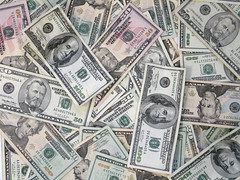 | 93 |
| 9361373495 | debate over freedom | Freedom is a main theme in American history, but an essentially contested concept. Through the years it has meant many different things to different people: freedom to enslave others, equal rights for all, liberation from big government and federal regulations, unregulated capitalism, among others. (p. 672) |  | 94 |





















































































































































